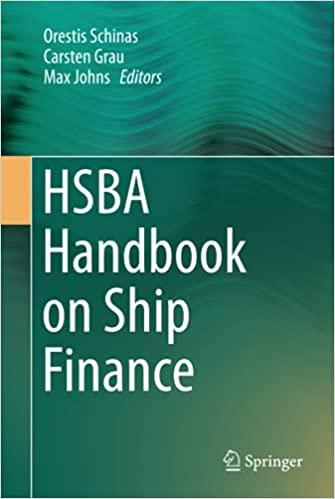Answered step by step
Verified Expert Solution
Question
1 Approved Answer
please summarize Using Discounted Cash Flow Analysis to Make Investment Decisions LEARNING OBJECTIVES After studying this chapter, you should be able to: L01 Identify the
please summarize 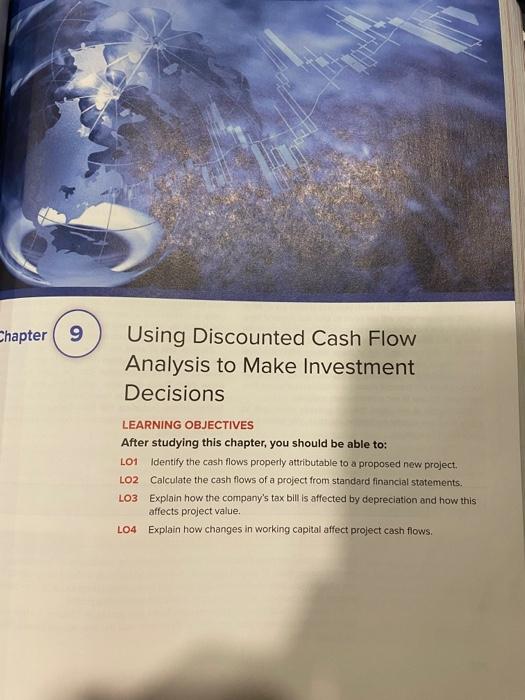
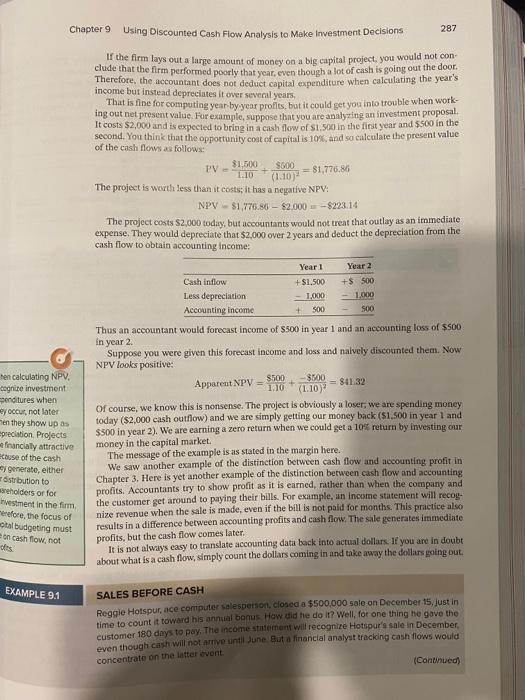
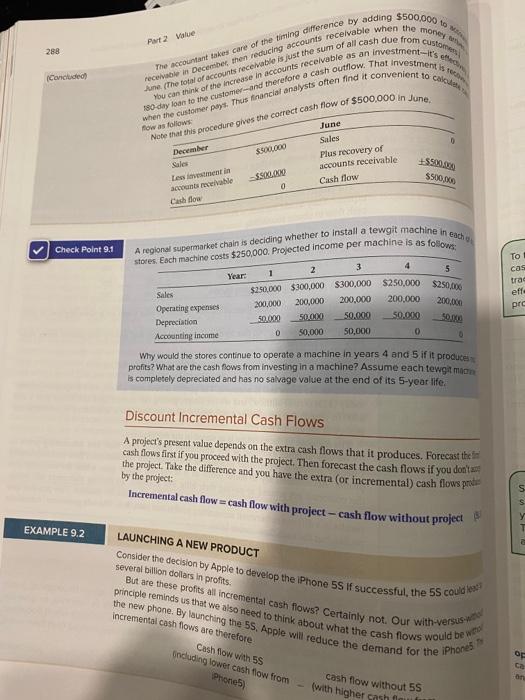
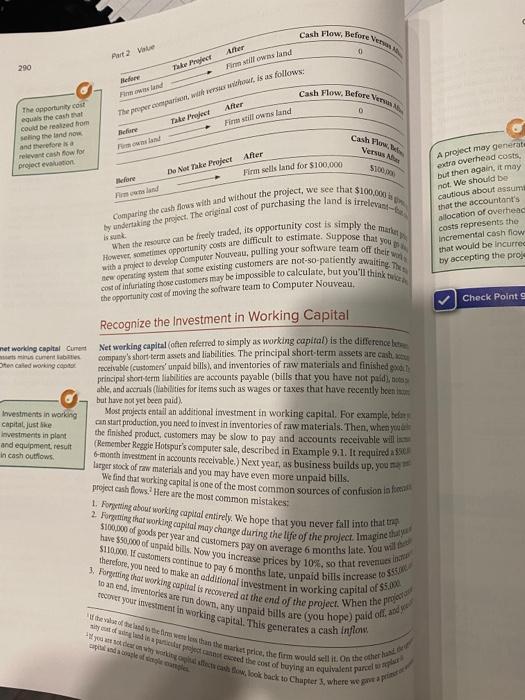
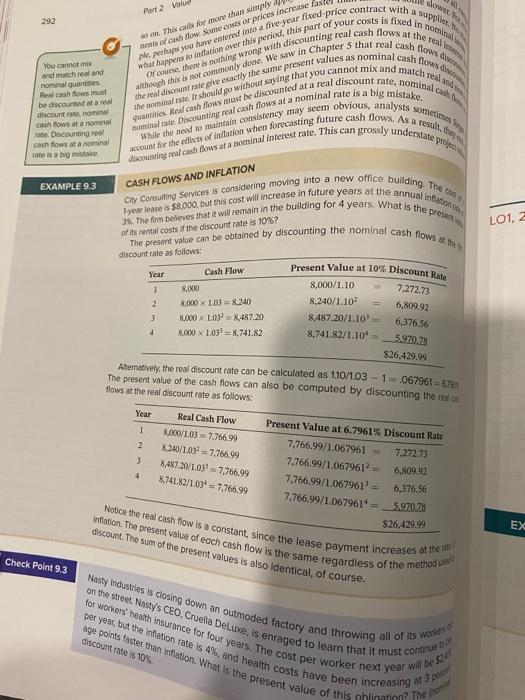
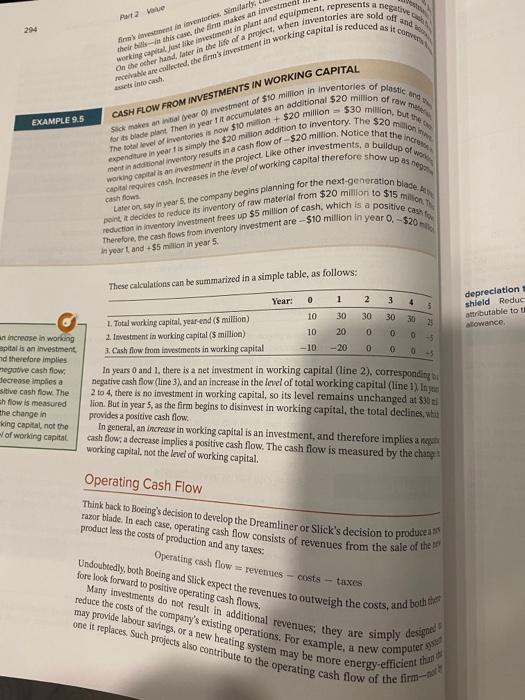
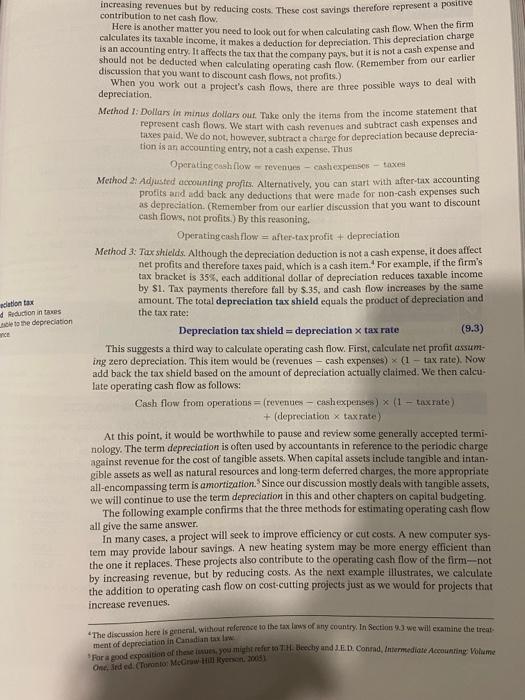
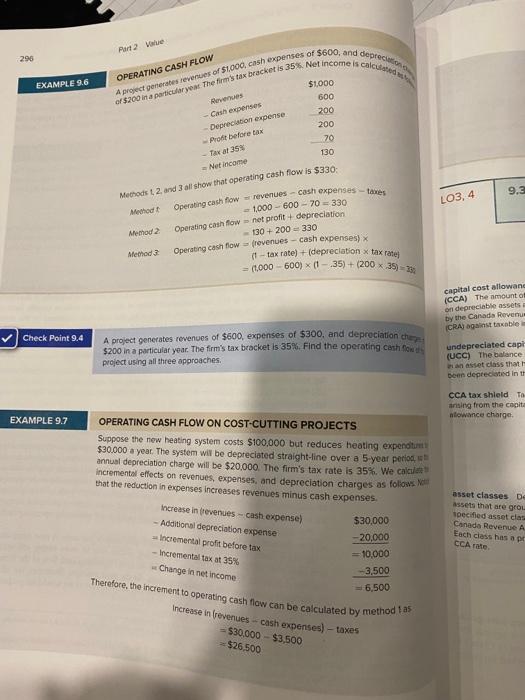
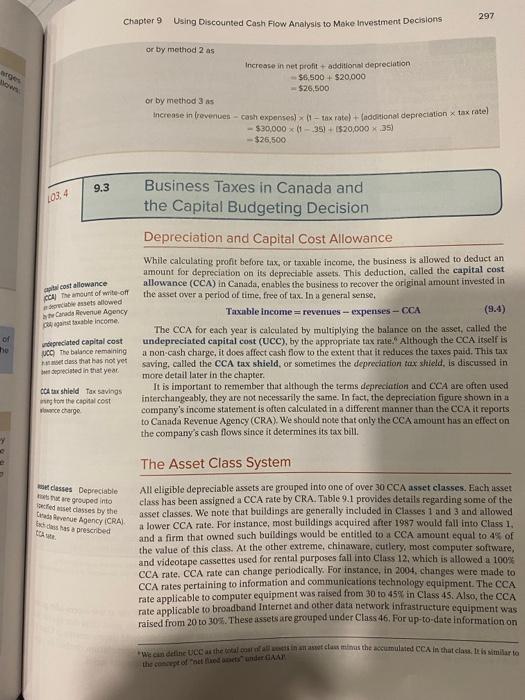
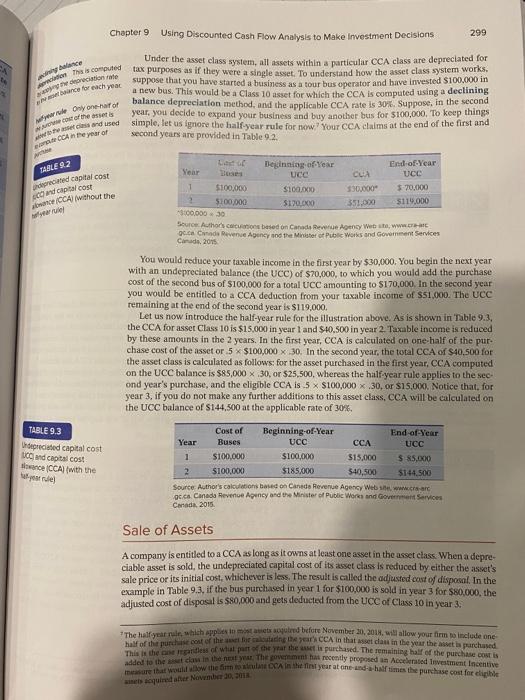
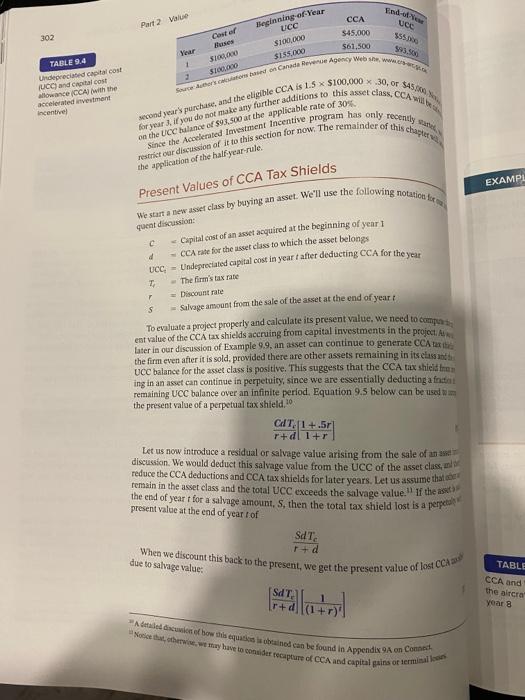
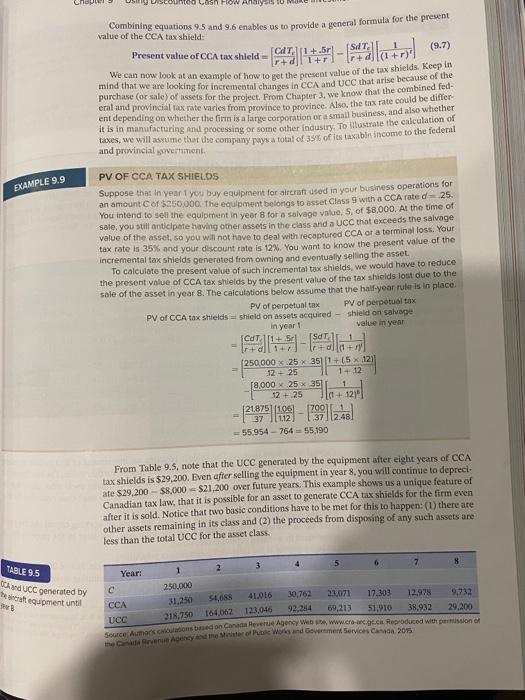
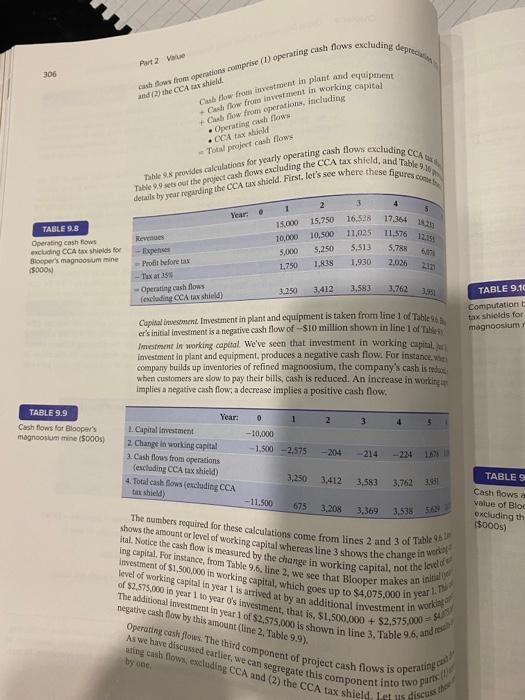
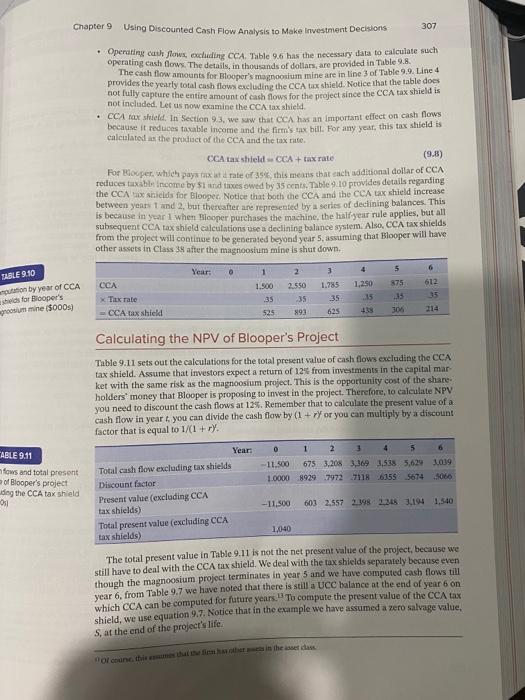
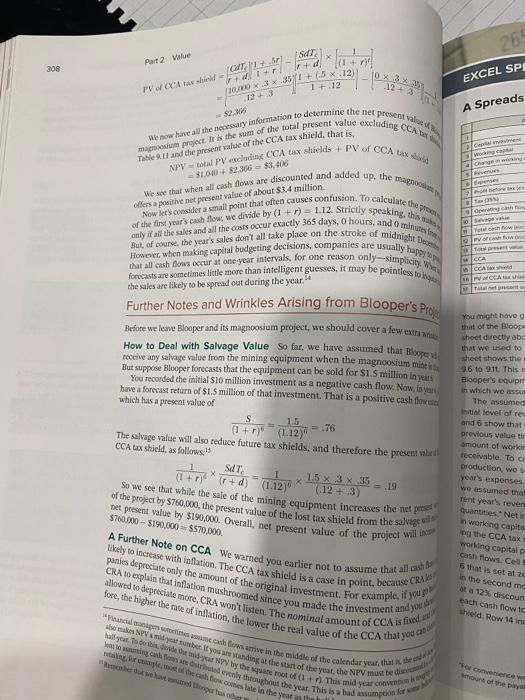
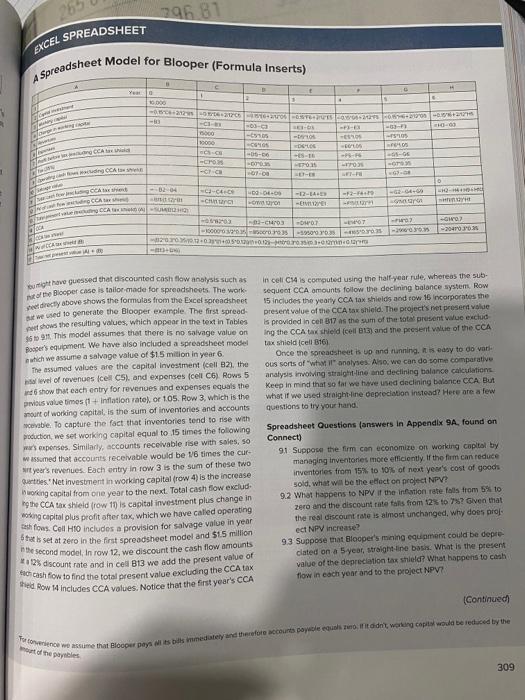
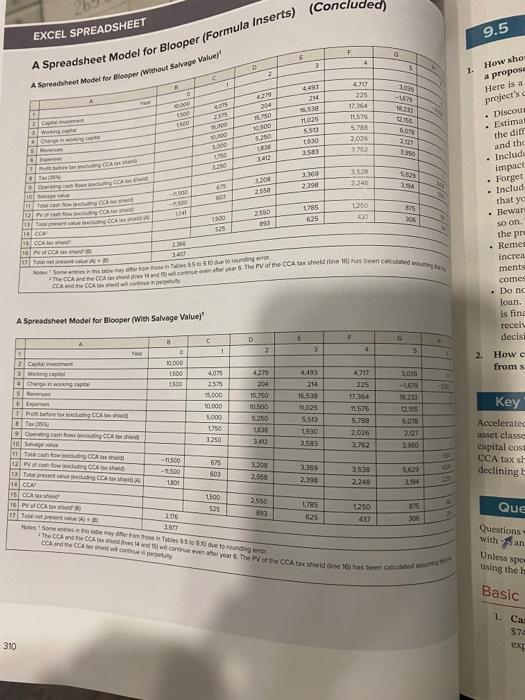
Using Discounted Cash Flow Analysis to Make Investment Decisions LEARNING OBJECTIVES After studying this chapter, you should be able to: L01 Identify the cash flows properly attributable to a proposed new project. LO2 Calculate the cash flows of a project from standard financial statements. LO3 Explain how the company's tax bill is affected by depreciation and how this affects project value. LO4 Explain how changes in working capital affect project cash flows. If the firm lays out a large amount of moncy on a big capital project, you would not conclude that the firm performed poorly that year, even though a lot of cash is going out the door. Therefore, the accountant does not deduct capital expenditure when calculating the year's income but instead depreciates it over sevenil years. That is fine for computing year-bycyear profits, but it could get you into trouble when working out net present value. For example, suppose that you are anatyzing an investment proposal. It costs 52,000 and is expected to bring in a cash flow of $1.502 in the first year and $500 in the second. You think that the opportanity cost of capital is 100 , and so calculate the present value of the cash floms as follows: PV=1.10$1,500+(1.10)2$600=81,776,86 The project is weuth less than it costs; it has a negative NPV: NPV=$1,776.00$2,000=$223.14 The project coats $2,000 todiiy, but accountants would not treat that outlay as an immediate expense. They would depreciate that $2,000 over 2 years and deduct the depreciation from the cash flow to obtain accounting income: Thus an accountant would forecast income of $500 in year 1 and an accominting loss of $500 in year 2 . Suppose yoa were given this forecast income and loss and nalvely discounted them. Now NPV looks positive: SALES BEFORE CASH Reggle Hotspur, ace computer salesperibit, closed a $500,000 sale-on Dencember 15, just in time to count it toward his snngkal ognus Haw wid the do it? Well, for one thing he gave the customer 180 days to pay, The neconestitutitent will recognize Hotspur's sale in December, even though cagh will hot artive in thil June Biat a financlal analyst trecking cash flows would concentrate on the lafter wiont. (Continued) partz value The accountant takes care of the tirting difference by adding 5500,000 to A manianwil subermarket chain is deciding whether to install a tewgit machine in each st Why woukd the stores continue to operate a machine in years 4 and 5 if it procuces. profits? What are the cash fows from investing in a machine? Assume each tewigit macrin is completely depreciated and has no salvage value at the end of its 5 -year life. Discount Incremental Cash Flows A project's present value depends on the extra cash flows that it produces. Forecast the cash flows first if you proceed with the project. Then forecast the cash flows if you dont a the project. Take the difference and you have the extra (or incremental) cash flows prots by the project: Incremental cash flow = cash flow with project - cash flow without project LAUNCHING A NEW PRODUCT Consider the decision by Apple to develop the Phone 5 S If successful, the 55 coundest But are these profits all incremental cash fiows? Certainly not. Our with-versusw' Principle reminds us that we also need to think about what the cash flows would be whis Cash flow with 5s inctuding lower cash flow from Cash flow without 55 (Protecs) therefore, fossomers continue to pay 6 months late, unpaid bills increase 105550 3. Forgating thot teed to make an odditional investment in working capital of 55.01. Whe recont your investmeat in working capital. This generates a cish inflow: quantities. Real cash flows riust be dlowan a fas a nominal rate is a big mistake, CASH FLOWS AND INFLATION Cty Consuting 5 ervices is considering moving into a new office building. The tyear tease is $9,000, but this cost will increase in future years at the annual inflation in Fyear tease is $9,000, but this cost will increase in future years at the annual infletion thes 33. The firit beheves that it will remain in the be The present value can be obtained by discounting the nominal cash flows at thif th discount rate as follows: Alernacvely, the real discount rate can be calculated as 1.10/1.031=.067961=67% The present value of the cash flows can also be computed by discounting the real bi fows at the real discount fate as follows: Nor infatio discount. The sum of the of eoch cash flow since the lease payment increases at the titit discount The sum of the present valush flow is the same regardiess of the method west is also identical, of course. Nasty industries is closing down an outmoded factory and throwing all of its worlesis 294 rectitibe are coll EXAMPLE 9.5 CASH FLOW FROM INVESTMENTS IN WORKING CAPITAL working captal is an itvestiment in the project. Like other invostients, a buildup of wistic. cash nows reduction in itwencory itvertment frees up 55 milition of cash. which is a po5isye caly therefore, the cash fiows tion invertor Operating Cash Flow Think back to Bocing's decision to develop the Dreamliner or Slick's decision to produceats razor blade, in each case, operating cash flow consists of revenues from the sale of the product less the costs of production and any taxes: Operatingcashflow=revenuescoststaxes Undoubtedly, both Boeing and Silck expect the revenues to outweigh the costs, and both top fore look forward to positive operating cash flows. Many investments do not result in additional revenues; they are simply designot at reduce the costs of the compary's existing operations, For example, a new computer st? may provide labour savings, or a new heating system may be more energy-efficient than one it replaces such projects also contribute to the operating cash flow of the firm- increasing revenues but by reducing costs. These cost savings therefore represent a positive contribution to net cash flow, Here is another matter you need to look out for when calculating cash flow. When the firm calculates its taxable income, it makes a deduction for depreciation. This depreciation charge is an accounting entry. It affects the tix that the company pays, but it is not a cash expense and should not be deducted when calculating operating cash flow. (Remember from our earlier discussion that you want to discount cash flows, not profits.) When you work out a project's cash flows, there are three possible ways to deal with depreciation. Method 1: Dollars in minus dollars ouf. Take only the items from the income statement that represent cash flows. We start with cash revenues and subtrict cash expenses and taxes paid. We do not, however, sibbtract a charge for depreciation because depreciation is an toccounting entry, not a cash expense. Thus Operatingcash flow - revenues - enahexpensek - taxes Method 2: Adjusted eccounting profits. Alternatively, you can start with after-tax accounting protits and edd back any deductions that were made for non-cash expenses such as deprecittion. (Remember from our earlier discussion that you want to discount cash flows, not profits.) By this reasoning. Operating cashilow = after-taxprofit + depreciation Method 3: Tax shields. Although the deprociation deduction is not a cash expense, it does affect net profits and therefore taxes paid, which is a cash item. 4 For example, if the firm's tax bracket is 35%, each additional dollar of depreciation reduces taxable income by \$1. Tax payments therefore fall by $3.3, and cash flow increases by the same amount. The total depreciation tax shield equals the product of depreciation and the tax rate: Depreciation tax shield = depreciation tax rate This suggests a third way to calculate operating cash flow. First, calculate net profit assuming zero depreciation. This item would be (revenues - cash expenses )(1 tax rate). Now add back the tax shield based on the amount of depreciation actually claimed. We then calculate operating cash flow as follows: Cash flow from operations = (revenues cashexpenses )(1 - teckrate ) + (depreciatiota taxrate ) At this point, it would be worthwhile to pause and review some generally accepted termnology. The term depreciation is often used by accountants in reference to the periodic charge against revenue for the cost of tangible assets. When capital assets include tangible and intangible assets as well as natural resources and long-term deferred charges, the more appropriate all-encompassing term is amortization. 5 Since our discussion mostiy deals with tangible assets, we will continue to use the term depreciation in this and other chapters on capital budgeting. The following example confirms that the three methods for estimating operating cash flow all give the same answer. In many cases, a project will seck to improve efficiency or cut costs. A new computer system may provide labour savings, A new heating system may be more energy efficient than the one it replaces. These projects also contribute to the operating cash flow of the firm-not by increasing revenue, but by reducing costs. As the next example lllustrates, we calculate the addition to operating cash flow on cost-cutting projects just as we would for projects that increase revenues. "The discussion here is generil. witheat referense to the tax linws of any coontgy. In Sections 9.3 we will exaitine the treat ment of depreciation in Camadian tax lw. 9ne. Ir ed TTimato: N. OPERATING CASH FLOW A project gonerates ! of $200 in a particuls Mechods 1,2 and 3 all show that operaving ace Mochadt Operating cash fow =r revenues - cash expenses taxes =1,00060070=330 Memod 2. Operating cash forw = net profit + depreciation Memod3: Operating casi fow = (revenues - cash expenses) x (1-tax rate) + (depreclation tax rate) =(1,000600)(1.35)+(200.35)=3 th OPERATING CASH FLOW ON COST-CUTTING PROJECTS Suppose the new heating system costs $100,000 but reduces heating expenotunti. $30.000 a year. The system wit be depreciated straight-line over a 5 year petion annual depreciation charge will be $20,000. The firm's tax rate is 35%. We calaika is incremental effects on revenues, expenses, and depreciation charges as foliows 2 that the reduction in expenses increases revenues minus cash exnancae. asset classes assems that are groL. speciffed asset clas Coneda Revenue A Each class has a pt CCA rate. or by mothod 2 as Incroase in net piofit + atditionat depreciation $2,500+520.000 =$26,500 or by metised 3 as Increase in (reventes - cash experses) (1 - tax rate) + (aco ticnal depreciation tax rate ) 530.000(135)+[320,00035) $25,500 The Asset Class System Mat classes Depreciable All eligible depreciable assets are grouped into one of over 30 CCA asset classes. Fach uswet tat ny are greuped into class has been assigned CCCA rate by CRA. Thble 9.1 provides details regarding some of the that etse dasses by the asset classes. We note that buildings are generally included in Classes 1 and 3 and altowed Ext toveroe Agency (CRA): a Jower CCA rate. For instance, most baildings acquired after 1987 wosild fall into Ctass 1. teaters has a prescribed and a firm that owned such buildings would be entitled to a CCA amount equal to aye of the value of this class. At the other extreme, chinarware, cutlery, most computer software, and videotape cassettes used for remtal purposes fall into Class 12 , which ts allowed a 100 of CCA rate. CCA rate can change periodically. For instance, in 2004, changos were made to CCA rates pertaining to information and communieations technology equlpment. The CCA rate applicable to computcr equipment was raised from 30 to 45% in Class 45. Also, the CCA rate applicable to broadband Internet and other data network infrastructure cqu]ptment was raised from 20 to 30 ar. These assets ife groupcd under Class 46 , For up-to-date information on Under the asset class system, all assets within a particular CCA class are depreciated for 7A 1 gL 9.2 propreated capital cost pect and captal cost jomber (CCA) (without the bo yee fuicl Claredat, 2015 You would reduce your taxable income in the first year by $30,000, You begin the next year with an undepreciated balance (the UCC) of $70,000, to which you would add the purchase cost of the second bus of $100.000 for a total UCC amounting to $170,000. In the second year you would be entitied to a CCA deduction from your taxable income of $51,000. The UCC remaining at the end of the second year is $119,000. Let us now introduce the half-year rule for the illustration above. As is shown in Table 9.3, the CCA for asset Class 10 is $15.000 in year 1 and $40.500 in year 2 . Taxable income is reduced by these amoants in the 2 years. In the first year, CCA is calculated on one-half of the purchase cost of the asset or 5$100,00030. In the second year, the total CCA of $40,500 for the asset class is calculated as follows: for the asset purchased in the first year, CCA computed on the UCC balance is $85,00030, or $25,500, whereas the half-year rule applies to the second year's purchase, and the eligible CCA is .5$100,000.30, or $15,000. Notice that, for year 3 , if you do not make any further additions to this asset class, CCA will be calculated on the UCC balance of $144,500 at the applicable rate of 30%, Ihdepreciatod capital cost teC and ceptsil cos! Hirince (CCA) fith the tur pasirite) occa. Caneds Revente Agency asd the Ninister of Public Moret end Gofrentent Servicen Certadi, 2015. Sale of Assets A company is entitled to a CCA as long as it owns at least one asset in the asset clasc. When a depreciable asset is sold, the undepreciated capital cost of its asset class is reduced by either the asset's sale price or its initial cost, whichever is less. The result is cilled the odjusted cost of disposal. In the example in Table 9.3, if the bus purthased in year 1 for $100,000 is sold in year 3 for $80,000, the adjusted cost of dispost is 580,000 and gets deducted from the UCC of Class 10 in year 3. This is the ond f iritikure that Woulit y r+dCdTc1+r1+.5r Let us now introduce a residual or salvege value arising from the sale of an amit discussion. We would deduct this salvage value from the UCC of the asset clas, mitis reduce the CCA deductions and CCA tax shield for later years. Let us assame that coci remain in the asset class and the total UCC exceeds the salvage value." If the asst) the end of year t for a salvnge amount, S, then the total tax shield lost is a perpecasis present value at the end of year tof r+dSdTc Whea we discount this back to the present, we get the present value of lost CCA 2. due to salvage value: [r+dSdTr][(1+r)r1] CCA and yoar 8 Combining equations 9.5 and 9.6 enables us to provide a general formula for the present value of the CCA tax shield: Present value of CCA tax shield =[r+dCdTe][1+r1+.5r][r+dSdTc][(1+r)r1] (9.7) We can now look at an example of how to get the present value of the tax shields. Keep in mind that we are looking for incremental changes in CCA and UCC that arise because of the purchase (or sale) of nssets for the project. From Chapter 3, we know that the combined federal and provincial tax rate varies from province to province. Also, the tax rate could be different depending on whether the firut is a lange corporation or a small business, and also whether it is in manufacturing and processing or some other industry. To illustrate the calculation of taxes, we will asyume ther Use compeaxy pays a total of 350 of its taxabln income to the federal and provincial sovertament. PV OF CCA TAX SHIEL.DS Suppose that in year 1 you buy equipraent for aircraft used in your business operations for an amount C of $250 000. The equipment bolongs to esset Class 9 with a CCA rate d=25. You intend to sell the equipment in year 8 for a salvage value, 5 , of $8,000. At the time of sale, you still anticipate haying other assets in the class and a UCC that exceeds the salvage value of the asset, so you will not have to deal with recaptured CCA or a terminal loss. Your tax rate is 35% and your discount rate is 12%. You want to know the present value of the incremental tax shields generated from owning and eventually selling the asset. To calculate the present value of such incremental tax shields, we would have to reduce the prosent ynlue of CCA tax shields by the present value of the tax shields lost due to the sole of the asset in year. 8 . The calculations below assume that the half-year rule is in place. PV of perpetual tax PV of perpetual tax PV of CCA tax shields = shield on assets acquired - shield on salvege in year 1 value in year =[r+dCdT][1+r1+5r][r+d5dTe][(1+r)1] =[12+25250.000.2535][1+121+(512)] [12+258,000.2535][1+12151] =[3721,875][1,121.05][37700][2.481] =55,954764=55,190 From Table 9.5, note that the UCC generated by the equipment aftet eight years of CCA tax shields is $29,200. Even affer selling the equipment in year 8 , you will continue to depreciate $29,200$8,000=$21,200 over future years. This example shows us a unique feature of Canadian tax law, that it is possible for an asset to generate CCA tax shields for the firm even after it is sold. Notice that two basic conditions have to be met for this to happen: (1) there are other assets remaining in its class and (2) the proceeds from disposing of any stich assets are less than the total UCC for the asset class. TAELE 9.5 that UCC generated by the aloct ucc generated by PEeR B Part 2 vale 306 ineld. - Openating oeselu flows- - CCA tax stadd - Tocal project cosh flows Table 98 peostdes calculations for yearly operating cash flows excluding CCA, tabie 99 sets oat the project cast fows excluding the CCA tax shield, and Table 9 If TABLE 9.8 Operating cash fows excluding CCA tax shiplds for Bloopers magnocsium mine ( 15000sin imestment in plant and equipment, produces a negative cash flow. For instance, wht when customers are slow to pay their bills, cash is reduced. An increase in workitede inplies a negative cash flow; a decrease implies a positive cash flow. shh flows for Elooper's ognoonium thine (5000s) ital. Notice the cash of level of working capital whereas line 3 shows the change in wer.s. ing capital, For instan is measured by the change in working capital, not the lendel The additional investment year 0 's investment, thrat is, $1,500,000+$2,575,000=$4 - Operating cavz fows, excluding CCA. Table 9.6 has the necessary data to ealculate such operating cash flows. The details, in thousands of dollars, are provided in Table 9.8. The cash flow amounts for. Blooper's magnoosium mine are in line 3 of Table 9.9. Line 4 provides the yearly total cash flowx eveluding the CCA tax shield. Notice that the table does not fully capture the entire amount of cash flows for the project since the CCA tax shield is not included, Let as now examine the CCA tax shietd. - CCA for shield. In Section 9.3, we ww that CCA has an important effect on cash flows bocause it redaces tavable incotne and the firm's tax bill. For any yeaf, this tax shield is calculated as the priudsct of the CCA and the tax rate. CCA tax shield =CCA+ twx rate Fof Booper, which pays tax at d rate of 35%, this meanis that each additional dollar of CCA reduces taxable income by $ t ind taxes owed by 35 cents. Table 9 io provides details regarding the CCA axsiaicids for Bloopec Notice that both the CCA and the CCA too shield increase between years 1 and 2 , brt thereafter are represented by a series of decining balances. This is because in year 1 when Blooper purchases the machine, the halfyear rule applies, but all subsequear CCA tax shield calculations use a declining balance sysiem. Also, CCA tax shields from the project will contime to be generated beyond year 5 , assuming that Blooper will have: other assets in Class 34 after the magnoosium mine is shut down. opersion by year of CCA itwias for Bicoper's yoosinu mine (5000s) Calculating the NPV of Blooper's Project Table 9.11 sets out the calculations for the total present value of cash flows eveluding the CCA tax shield. Assume that investors expect a return of 12% from investments in the capital market with the same risk as the magnoosium project. Thits is the oppottunity cost of the shareholders' money that Blooper is proposing to invest in the project. Therefore, to calculate NPV you need to discount the cash flows at 12%. Remember that to calculate the present value of a cash flow in year f. you can divide the cash flow by (1+r) or you can multiply by a discount factor that is equal to 1/(1+r)y. 1. fows and total present ol Biooper's project iog the CCA tax shield O3] The total present value in Table 9.11 is not the net present value of tho project, because we still have to deal with the CCA tax shield. We deal with the tax shiclds separately becanse even though the magnoosiam project terminates in year 5 and we have computed cash flows till year 6 , from Table 9.7 we have noted that there is still a UCC balance at the end of year 6 on which CCA can be computed for future years. 13 To compute the present value of the CCA tax shield, we use equation 9.7. Notice that in the example we have assumed a zero salvige value, 5 , at the and of the project's life. ofers a positive net persent value of about $3.4 million. Now ket's consider a small poiat that often causes confusion. To calculate the phopr. of the tinst yar's cach flow; we divide by (1+r)=1.12. Strictly speaking the pistop However, when making capital budgeting decisions, companies are usually hapsy bpp that all cash fors occur at oncyear intervals, for one reison only-simplicity. Wif forccasts are sometimes little more than intelligent guesses, it may be pointless to thy the sales are likely to be spread out during the year. Further Notes and Wrinkles Arising from Blooper's Proje Before we leave Blooper and its magnoosium project, we should cover a fetw extri anded How to Deal with Salvage Value So far, we have assumed that Bsopecti recelve any salvage value from the mining equipment when the magnoosium miteit But suppose Blooper forecasts that the equipment can be sold for \$1.S million in yeest You recorded the initial $10 million investment as a negative cash flow. Now, inyery have a farecast return of \$1,5 which has a present value of (1+r)1S=(1.12)1.5=76 The salvage value will also reduce future tax shields, and therefore the present whasi CCA tex shicld, as follows.'s (1+r)41(r+d)SdTc=(1.12)01(.12+.3)1.5.335=.19 So we see that while the sale of the mining equipment increases the net proed of the project by $760,000, the present value of the lost tax shield from the salvege who net present value by $190,000. Overall, net present value of the project will inst $760,000$190,000=$570,000. A Further Note on CCA. We warned you earlier not to assume that all wash b likely to increase with inflation. The CCA tax shicld is a case in point, because CRA panies depreciate only the amount of the original investment. For example, if jod 2)32 CRA to explain that inflation mushroomed since you made the investment and you thr forc, the higher the rate of inflation, the lower the real value of the CCA that you cant's enreadsheet Model for Blooper (Formula Inserts) (Continued) hoset of the pambieles EXCEL SPREADSHEET (Formula Inserts) (Concluded) 1. How sho propost project's project's - Discoul Estimal and the - Includ impact - Farget - Inclad that yo - Bewar so on. A Spreadsheet Model for Blooper (With Salvage Value)' 2. How from s Key Accelerated asset classe capital cos: deA tix sh declining Questions With 24 ith Unless spec Using Discounted Cash Flow Analysis to Make Investment Decisions LEARNING OBJECTIVES After studying this chapter, you should be able to: L01 Identify the cash flows properly attributable to a proposed new project. LO2 Calculate the cash flows of a project from standard financial statements. LO3 Explain how the company's tax bill is affected by depreciation and how this affects project value. LO4 Explain how changes in working capital affect project cash flows. If the firm lays out a large amount of moncy on a big capital project, you would not conclude that the firm performed poorly that year, even though a lot of cash is going out the door. Therefore, the accountant does not deduct capital expenditure when calculating the year's income but instead depreciates it over sevenil years. That is fine for computing year-bycyear profits, but it could get you into trouble when working out net present value. For example, suppose that you are anatyzing an investment proposal. It costs 52,000 and is expected to bring in a cash flow of $1.502 in the first year and $500 in the second. You think that the opportanity cost of capital is 100 , and so calculate the present value of the cash floms as follows: PV=1.10$1,500+(1.10)2$600=81,776,86 The project is weuth less than it costs; it has a negative NPV: NPV=$1,776.00$2,000=$223.14 The project coats $2,000 todiiy, but accountants would not treat that outlay as an immediate expense. They would depreciate that $2,000 over 2 years and deduct the depreciation from the cash flow to obtain accounting income: Thus an accountant would forecast income of $500 in year 1 and an accominting loss of $500 in year 2 . Suppose yoa were given this forecast income and loss and nalvely discounted them. Now NPV looks positive: SALES BEFORE CASH Reggle Hotspur, ace computer salesperibit, closed a $500,000 sale-on Dencember 15, just in time to count it toward his snngkal ognus Haw wid the do it? Well, for one thing he gave the customer 180 days to pay, The neconestitutitent will recognize Hotspur's sale in December, even though cagh will hot artive in thil June Biat a financlal analyst trecking cash flows would concentrate on the lafter wiont. (Continued) partz value The accountant takes care of the tirting difference by adding 5500,000 to A manianwil subermarket chain is deciding whether to install a tewgit machine in each st Why woukd the stores continue to operate a machine in years 4 and 5 if it procuces. profits? What are the cash fows from investing in a machine? Assume each tewigit macrin is completely depreciated and has no salvage value at the end of its 5 -year life. Discount Incremental Cash Flows A project's present value depends on the extra cash flows that it produces. Forecast the cash flows first if you proceed with the project. Then forecast the cash flows if you dont a the project. Take the difference and you have the extra (or incremental) cash flows prots by the project: Incremental cash flow = cash flow with project - cash flow without project LAUNCHING A NEW PRODUCT Consider the decision by Apple to develop the Phone 5 S If successful, the 55 coundest But are these profits all incremental cash fiows? Certainly not. Our with-versusw' Principle reminds us that we also need to think about what the cash flows would be whis Cash flow with 5s inctuding lower cash flow from Cash flow without 55 (Protecs) therefore, fossomers continue to pay 6 months late, unpaid bills increase 105550 3. Forgating thot teed to make an odditional investment in working capital of 55.01. Whe recont your investmeat in working capital. This generates a cish inflow: quantities. Real cash flows riust be dlowan a fas a nominal rate is a big mistake, CASH FLOWS AND INFLATION Cty Consuting 5 ervices is considering moving into a new office building. The tyear tease is $9,000, but this cost will increase in future years at the annual inflation in Fyear tease is $9,000, but this cost will increase in future years at the annual infletion thes 33. The firit beheves that it will remain in the be The present value can be obtained by discounting the nominal cash flows at thif th discount rate as follows: Alernacvely, the real discount rate can be calculated as 1.10/1.031=.067961=67% The present value of the cash flows can also be computed by discounting the real bi fows at the real discount fate as follows: Nor infatio discount. The sum of the of eoch cash flow since the lease payment increases at the titit discount The sum of the present valush flow is the same regardiess of the method west is also identical, of course. Nasty industries is closing down an outmoded factory and throwing all of its worlesis 294 rectitibe are coll EXAMPLE 9.5 CASH FLOW FROM INVESTMENTS IN WORKING CAPITAL working captal is an itvestiment in the project. Like other invostients, a buildup of wistic. cash nows reduction in itwencory itvertment frees up 55 milition of cash. which is a po5isye caly therefore, the cash fiows tion invertor Operating Cash Flow Think back to Bocing's decision to develop the Dreamliner or Slick's decision to produceats razor blade, in each case, operating cash flow consists of revenues from the sale of the product less the costs of production and any taxes: Operatingcashflow=revenuescoststaxes Undoubtedly, both Boeing and Silck expect the revenues to outweigh the costs, and both top fore look forward to positive operating cash flows. Many investments do not result in additional revenues; they are simply designot at reduce the costs of the compary's existing operations, For example, a new computer st? may provide labour savings, or a new heating system may be more energy-efficient than one it replaces such projects also contribute to the operating cash flow of the firm- increasing revenues but by reducing costs. These cost savings therefore represent a positive contribution to net cash flow, Here is another matter you need to look out for when calculating cash flow. When the firm calculates its taxable income, it makes a deduction for depreciation. This depreciation charge is an accounting entry. It affects the tix that the company pays, but it is not a cash expense and should not be deducted when calculating operating cash flow. (Remember from our earlier discussion that you want to discount cash flows, not profits.) When you work out a project's cash flows, there are three possible ways to deal with depreciation. Method 1: Dollars in minus dollars ouf. Take only the items from the income statement that represent cash flows. We start with cash revenues and subtrict cash expenses and taxes paid. We do not, however, sibbtract a charge for depreciation because depreciation is an toccounting entry, not a cash expense. Thus Operatingcash flow - revenues - enahexpensek - taxes Method 2: Adjusted eccounting profits. Alternatively, you can start with after-tax accounting protits and edd back any deductions that were made for non-cash expenses such as deprecittion. (Remember from our earlier discussion that you want to discount cash flows, not profits.) By this reasoning. Operating cashilow = after-taxprofit + depreciation Method 3: Tax shields. Although the deprociation deduction is not a cash expense, it does affect net profits and therefore taxes paid, which is a cash item. 4 For example, if the firm's tax bracket is 35%, each additional dollar of depreciation reduces taxable income by \$1. Tax payments therefore fall by $3.3, and cash flow increases by the same amount. The total depreciation tax shield equals the product of depreciation and the tax rate: Depreciation tax shield = depreciation tax rate This suggests a third way to calculate operating cash flow. First, calculate net profit assuming zero depreciation. This item would be (revenues - cash expenses )(1 tax rate). Now add back the tax shield based on the amount of depreciation actually claimed. We then calculate operating cash flow as follows: Cash flow from operations = (revenues cashexpenses )(1 - teckrate ) + (depreciatiota taxrate ) At this point, it would be worthwhile to pause and review some generally accepted termnology. The term depreciation is often used by accountants in reference to the periodic charge against revenue for the cost of tangible assets. When capital assets include tangible and intangible assets as well as natural resources and long-term deferred charges, the more appropriate all-encompassing term is amortization. 5 Since our discussion mostiy deals with tangible assets, we will continue to use the term depreciation in this and other chapters on capital budgeting. The following example confirms that the three methods for estimating operating cash flow all give the same answer. In many cases, a project will seck to improve efficiency or cut costs. A new computer system may provide labour savings, A new heating system may be more energy efficient than the one it replaces. These projects also contribute to the operating cash flow of the firm-not by increasing revenue, but by reducing costs. As the next example lllustrates, we calculate the addition to operating cash flow on cost-cutting projects just as we would for projects that increase revenues. "The discussion here is generil. witheat referense to the tax linws of any coontgy. In Sections 9.3 we will exaitine the treat ment of depreciation in Camadian tax lw. 9ne. Ir ed TTimato: N. OPERATING CASH FLOW A project gonerates ! of $200 in a particuls Mechods 1,2 and 3 all show that operaving ace Mochadt Operating cash fow =r revenues - cash expenses taxes =1,00060070=330 Memod 2. Operating cash forw = net profit + depreciation Memod3: Operating casi fow = (revenues - cash expenses) x (1-tax rate) + (depreclation tax rate) =(1,000600)(1.35)+(200.35)=3 th OPERATING CASH FLOW ON COST-CUTTING PROJECTS Suppose the new heating system costs $100,000 but reduces heating expenotunti. $30.000 a year. The system wit be depreciated straight-line over a 5 year petion annual depreciation charge will be $20,000. The firm's tax rate is 35%. We calaika is incremental effects on revenues, expenses, and depreciation charges as foliows 2 that the reduction in expenses increases revenues minus cash exnancae. asset classes assems that are groL. speciffed asset clas Coneda Revenue A Each class has a pt CCA rate. or by mothod 2 as Incroase in net piofit + atditionat depreciation $2,500+520.000 =$26,500 or by metised 3 as Increase in (reventes - cash experses) (1 - tax rate) + (aco ticnal depreciation tax rate ) 530.000(135)+[320,00035) $25,500 The Asset Class System Mat classes Depreciable All eligible depreciable assets are grouped into one of over 30 CCA asset classes. Fach uswet tat ny are greuped into class has been assigned CCCA rate by CRA. Thble 9.1 provides details regarding some of the that etse dasses by the asset classes. We note that buildings are generally included in Classes 1 and 3 and altowed Ext toveroe Agency (CRA): a Jower CCA rate. For instance, most baildings acquired after 1987 wosild fall into Ctass 1. teaters has a prescribed and a firm that owned such buildings would be entitled to a CCA amount equal to aye of the value of this class. At the other extreme, chinarware, cutlery, most computer software, and videotape cassettes used for remtal purposes fall into Class 12 , which ts allowed a 100 of CCA rate. CCA rate can change periodically. For instance, in 2004, changos were made to CCA rates pertaining to information and communieations technology equlpment. The CCA rate applicable to computcr equipment was raised from 30 to 45% in Class 45. Also, the CCA rate applicable to broadband Internet and other data network infrastructure cqu]ptment was raised from 20 to 30 ar. These assets ife groupcd under Class 46 , For up-to-date information on Under the asset class system, all assets within a particular CCA class are depreciated for 7A 1 gL 9.2 propreated capital cost pect and captal cost jomber (CCA) (without the bo yee fuicl Claredat, 2015 You would reduce your taxable income in the first year by $30,000, You begin the next year with an undepreciated balance (the UCC) of $70,000, to which you would add the purchase cost of the second bus of $100.000 for a total UCC amounting to $170,000. In the second year you would be entitied to a CCA deduction from your taxable income of $51,000. The UCC remaining at the end of the second year is $119,000. Let us now introduce the half-year rule for the illustration above. As is shown in Table 9.3, the CCA for asset Class 10 is $15.000 in year 1 and $40.500 in year 2 . Taxable income is reduced by these amoants in the 2 years. In the first year, CCA is calculated on one-half of the purchase cost of the asset or 5$100,00030. In the second year, the total CCA of $40,500 for the asset class is calculated as follows: for the asset purchased in the first year, CCA computed on the UCC balance is $85,00030, or $25,500, whereas the half-year rule applies to the second year's purchase, and the eligible CCA is .5$100,000.30, or $15,000. Notice that, for year 3 , if you do not make any further additions to this asset class, CCA will be calculated on the UCC balance of $144,500 at the applicable rate of 30%, Ihdepreciatod capital cost teC and ceptsil cos! Hirince (CCA) fith the tur pasirite) occa. Caneds Revente Agency asd the Ninister of Public Moret end Gofrentent Servicen Certadi, 2015. Sale of Assets A company is entitled to a CCA as long as it owns at least one asset in the asset clasc. When a depreciable asset is sold, the undepreciated capital cost of its asset class is reduced by either the asset's sale price or its initial cost, whichever is less. The result is cilled the odjusted cost of disposal. In the example in Table 9.3, if the bus purthased in year 1 for $100,000 is sold in year 3 for $80,000, the adjusted cost of dispost is 580,000 and gets deducted from the UCC of Class 10 in year 3. This is the ond f iritikure that Woulit y r+dCdTc1+r1+.5r Let us now introduce a residual or salvege value arising from the sale of an amit discussion. We would deduct this salvage value from the UCC of the asset clas, mitis reduce the CCA deductions and CCA tax shield for later years. Let us assame that coci remain in the asset class and the total UCC exceeds the salvage value." If the asst) the end of year t for a salvnge amount, S, then the total tax shield lost is a perpecasis present value at the end of year tof r+dSdTc Whea we discount this back to the present, we get the present value of lost CCA 2. due to salvage value: [r+dSdTr][(1+r)r1] CCA and yoar 8 Combining equations 9.5 and 9.6 enables us to provide a general formula for the present value of the CCA tax shield: Present value of CCA tax shield =[r+dCdTe][1+r1+.5r][r+dSdTc][(1+r)r1] (9.7) We can now look at an example of how to get the present value of the tax shields. Keep in mind that we are looking for incremental changes in CCA and UCC that arise because of the purchase (or sale) of nssets for the project. From Chapter 3, we know that the combined federal and provincial tax rate varies from province to province. Also, the tax rate could be different depending on whether the firut is a lange corporation or a small business, and also whether it is in manufacturing and processing or some other industry. To illustrate the calculation of taxes, we will asyume ther Use compeaxy pays a total of 350 of its taxabln income to the federal and provincial sovertament. PV OF CCA TAX SHIEL.DS Suppose that in year 1 you buy equipraent for aircraft used in your business operations for an amount C of $250 000. The equipment bolongs to esset Class 9 with a CCA rate d=25. You intend to sell the equipment in year 8 for a salvage value, 5 , of $8,000. At the time of sale, you still anticipate haying other assets in the class and a UCC that exceeds the salvage value of the asset, so you will not have to deal with recaptured CCA or a terminal loss. Your tax rate is 35% and your discount rate is 12%. You want to know the present value of the incremental tax shields generated from owning and eventually selling the asset. To calculate the present value of such incremental tax shields, we would have to reduce the prosent ynlue of CCA tax shields by the present value of the tax shields lost due to the sole of the asset in year. 8 . The calculations below assume that the half-year rule is in place. PV of perpetual tax PV of perpetual tax PV of CCA tax shields = shield on assets acquired - shield on salvege in year 1 value in year =[r+dCdT][1+r1+5r][r+d5dTe][(1+r)1] =[12+25250.000.2535][1+121+(512)] [12+258,000.2535][1+12151] =[3721,875][1,121.05][37700][2.481] =55,954764=55,190 From Table 9.5, note that the UCC generated by the equipment aftet eight years of CCA tax shields is $29,200. Even affer selling the equipment in year 8 , you will continue to depreciate $29,200$8,000=$21,200 over future years. This example shows us a unique feature of Canadian tax law, that it is possible for an asset to generate CCA tax shields for the firm even after it is sold. Notice that two basic conditions have to be met for this to happen: (1) there are other assets remaining in its class and (2) the proceeds from disposing of any stich assets are less than the total UCC for the asset class. TAELE 9.5 that UCC generated by the aloct ucc generated by PEeR B Part 2 vale 306 ineld. - Openating oeselu flows- - CCA tax stadd - Tocal project cosh flows Table 98 peostdes calculations for yearly operating cash flows excluding CCA, tabie 99 sets oat the project cast fows excluding the CCA tax shield, and Table 9 If TABLE 9.8 Operating cash fows excluding CCA tax shiplds for Bloopers magnocsium mine ( 15000sin imestment in plant and equipment, produces a negative cash flow. For instance, wht when customers are slow to pay their bills, cash is reduced. An increase in workitede inplies a negative cash flow; a decrease implies a positive cash flow. shh flows for Elooper's ognoonium thine (5000s) ital. Notice the cash of level of working capital whereas line 3 shows the change in wer.s. ing capital, For instan is measured by the change in working capital, not the lendel The additional investment year 0 's investment, thrat is, $1,500,000+$2,575,000=$4 - Operating cavz fows, excluding CCA. Table 9.6 has the necessary data to ealculate such operating cash flows. The details, in thousands of dollars, are provided in Table 9.8. The cash flow amounts for. Blooper's magnoosium mine are in line 3 of Table 9.9. Line 4 provides the yearly total cash flowx eveluding the CCA tax shield. Notice that the table does not fully capture the entire amount of cash flows for the project since the CCA tax shield is not included, Let as now examine the CCA tax shietd. - CCA for shield. In Section 9.3, we ww that CCA has an important effect on cash flows bocause it redaces tavable incotne and the firm's tax bill. For any yeaf, this tax shield is calculated as the priudsct of the CCA and the tax rate. CCA tax shield =CCA+ twx rate Fof Booper, which pays tax at d rate of 35%, this meanis that each additional dollar of CCA reduces taxable income by $ t ind taxes owed by 35 cents. Table 9 io provides details regarding the CCA axsiaicids for Bloopec Notice that both the CCA and the CCA too shield increase between years 1 and 2 , brt thereafter are represented by a series of decining balances. This is because in year 1 when Blooper purchases the machine, the halfyear rule applies, but all subsequear CCA tax shield calculations use a declining balance sysiem. Also, CCA tax shields from the project will contime to be generated beyond year 5 , assuming that Blooper will have: other assets in Class 34 after the magnoosium mine is shut down. opersion by year of CCA itwias for Bicoper's yoosinu mine (5000s) Calculating the NPV of Blooper's Project Table 9.11 sets out the calculations for the total present value of cash flows eveluding the CCA tax shield. Assume that investors expect a return of 12% from investments in the capital market with the same risk as the magnoosium project. Thits is the oppottunity cost of the shareholders' money that Blooper is proposing to invest in the project. Therefore, to calculate NPV you need to discount the cash flows at 12%. Remember that to calculate the present value of a cash flow in year f. you can divide the cash flow by (1+r) or you can multiply by a discount factor that is equal to 1/(1+r)y. 1. fows and total present ol Biooper's project iog the CCA tax shield O3] The total present value in Table 9.11 is not the net present value of tho project, because we still have to deal with the CCA tax shield. We deal with the tax shiclds separately becanse even though the magnoosiam project terminates in year 5 and we have computed cash flows till year 6 , from Table 9.7 we have noted that there is still a UCC balance at the end of year 6 on which CCA can be computed for future years. 13 To compute the present value of the CCA tax shield, we use equation 9.7. Notice that in the example we have assumed a zero salvige value, 5 , at the and of the project's life. ofers a positive net persent value of about $3.4 million. Now ket's consider a small poiat that often causes confusion. To calculate the phopr. of the tinst yar's cach flow; we divide by (1+r)=1.12. Strictly speaking the pistop However, when making capital budgeting decisions, companies are usually hapsy bpp that all cash fors occur at oncyear intervals, for one reison only-simplicity. Wif forccasts are sometimes little more than intelligent guesses, it may be pointless to thy the sales are likely to be spread out during the year. Further Notes and Wrinkles Arising from Blooper's Proje Before we leave Blooper and its magnoosium project, we should cover a fetw extri anded How to Deal with Salvage Value So far, we have assumed that Bsopecti recelve any salvage value from the mining equipment when the magnoosium miteit But suppose Blooper forecasts that the equipment can be sold for \$1.S million in yeest You recorded the initial $10 million investment as a negative cash flow. Now, inyery have a farecast return of \$1,5 which has a present value of (1+r)1S=(1.12)1.5=76 The salvage value will also reduce future tax shields, and therefore the present whasi CCA tex shicld, as follows.'s (1+r)41(r+d)SdTc=(1.12)01(.12+.3)1.5.335=.19 So we see that while the sale of the mining equipment increases the net proed of the project by $760,000, the present value of the lost tax shield from the salvege who net present value by $190,000. Overall, net present value of the project will inst $760,000$190,000=$570,000. A Further Note on CCA. We warned you earlier not to assume that all wash b likely to increase with inflation. The CCA tax shicld is a case in point, because CRA panies depreciate only the amount of the original investment. For example, if jod 2)32 CRA to explain that inflation mushroomed since you made the investment and you thr forc, the higher the rate of inflation, the lower the real value of the CCA that you cant's enreadsheet Model for Blooper (Formula Inserts) (Continued) hoset of the pambieles EXCEL SPREADSHEET (Formula Inserts) (Concluded) 1. How sho propost project's project's - Discoul Estimal and the - Includ impact - Farget - Inclad that yo - Bewar so on. A Spreadsheet Model for Blooper (With Salvage Value)' 2. How from s Key Accelerated asset classe capital cos: deA tix sh declining Questions With 24 ith Unless spec 
















Step by Step Solution
There are 3 Steps involved in it
Step: 1

Get Instant Access to Expert-Tailored Solutions
See step-by-step solutions with expert insights and AI powered tools for academic success
Step: 2

Step: 3

Ace Your Homework with AI
Get the answers you need in no time with our AI-driven, step-by-step assistance
Get Started


